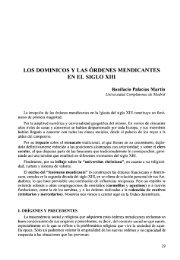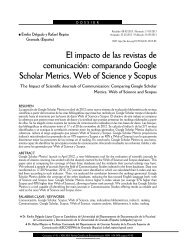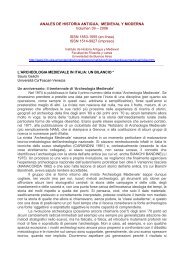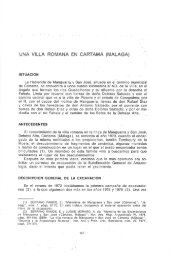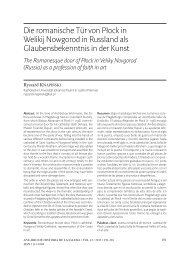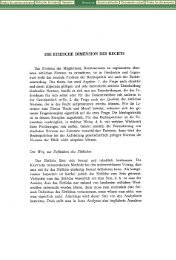Roslyn M. Frank 1.0. Introduction In the first chapter of this ... - Dialnet
Roslyn M. Frank 1.0. Introduction In the first chapter of this ... - Dialnet
Roslyn M. Frank 1.0. Introduction In the first chapter of this ... - Dialnet
Create successful ePaper yourself
Turn your PDF publications into a flip-book with our unique Google optimized e-Paper software.
100 <strong>Roslyn</strong> M. <strong>Frank</strong><br />
Neolithic as in Renfrew’s narrative, but ra<strong>the</strong>r to <strong>the</strong> Mesolithic, while <strong>the</strong> PC<br />
approach alleges that some linguistic features could date back to <strong>the</strong> Upper<br />
Paleolithic (Alinei 2004b; Costa 2001). <strong>In</strong> short, <strong>the</strong> PC narrative argues for<br />
an essentially in situ development <strong>of</strong> IE and for linguistic continuity between<br />
<strong>the</strong>se earlier stages and later ones.<br />
By setting up an in situ evolution for IE languages, a curious thing happens<br />
with respect to Western Europe: <strong>the</strong> Basque language can no longer be<br />
classed as «pre-<strong>In</strong>do-European», but ra<strong>the</strong>r must be seen as evolving alongside<br />
IE languages. Naturally, it is not possible to date <strong>the</strong> Basque language<br />
itself. None<strong>the</strong>less, most geneticists would argue that <strong>the</strong>re is every reason to<br />
assume that <strong>the</strong>re has been genetic continuity within <strong>the</strong> Pyrenean-Cantabrian<br />
zone, and <strong>the</strong>refore, that, as Gamble et al. (2005) have proposed, at <strong>this</strong> juncture<br />
it might be appropriate to put forward <strong>the</strong> following hypo<strong>the</strong>sis: that <strong>the</strong><br />
language(s) spoken in <strong>this</strong> zone in prehistory might well have been those that<br />
are ancestral to modern Basque.<br />
<strong>In</strong> Table 1 we can see how <strong>the</strong> time-scales <strong>of</strong> <strong>the</strong> traditional IE narrative and<br />
that <strong>of</strong> Renfrew relate to Alinei’s model <strong>of</strong> development, specifically as it applies<br />
to Italy and more indirectly to <strong>the</strong> development <strong>of</strong> <strong>the</strong> Romance languages.<br />
At <strong>the</strong> same time, <strong>this</strong> model makes no mention <strong>of</strong> <strong>the</strong> possible linguistic influence<br />
<strong>of</strong> languages spoken in <strong>the</strong> Pyrenean-Cantabrian refugium zone on <strong>the</strong><br />
development <strong>of</strong> Proto-IE or <strong>the</strong> Romance languages.<br />
Table 1. Three <strong>the</strong>ories concerning <strong>the</strong> development <strong>of</strong> Proto-<strong>In</strong>do-European (Alinei 2001: 16).<br />
Although proponents <strong>of</strong> PC <strong>of</strong>ten make reference to <strong>the</strong> expression<br />
«palaeolithic continuity» in <strong>the</strong>ir investigations, <strong>the</strong>ir research is far from homogeneous<br />
in terms <strong>of</strong> <strong>the</strong> time depth assigned to <strong>In</strong>do-European languages,<br />
that is, <strong>the</strong>re are significant variations in <strong>the</strong> way that <strong>the</strong> origins <strong>of</strong> <strong>this</strong> language



